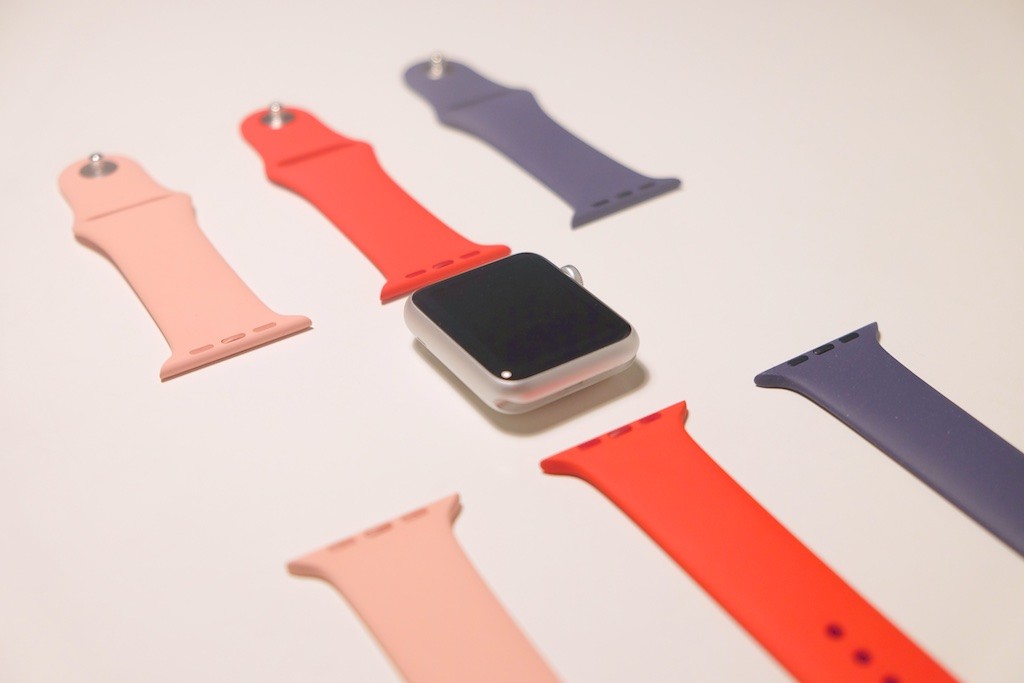The Apple Watch: Is it right for runners?
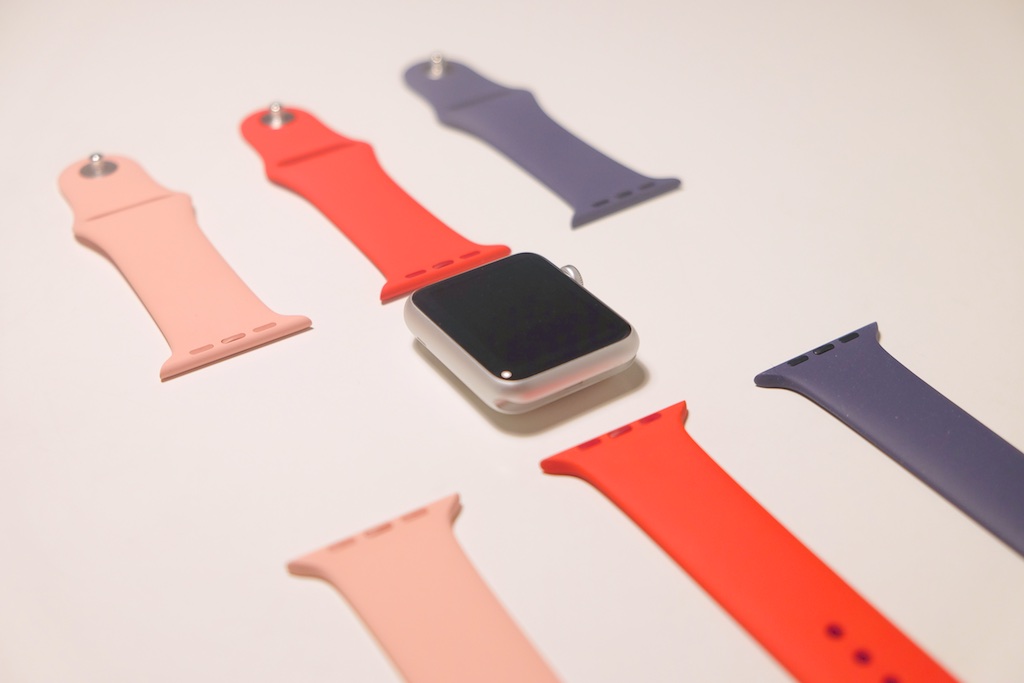
After eight months on the market and the evolution of some key fitness apps, is Apple Watch ready to be the go-to running watch?
The Apple Watch brings to the mainstream what running watch users have come to enjoy over the years: a rechargeable battery, connectivity to the world and fitness tracking capabilities. But where Apple Watch excels is, of course, in its design – but also in terms of its promise.
Exceptional Design
The fit and finish is as one would expect. The Sport model is thoughtfully constructed for a runner. It has a scratch-resistant finish (the non-sport models have a sapphire crystal finish, which, as watch snobs will know, is a must for a quality timepiece; but a sapphire crystal is heavy, so the plastic finish is a smart move for the Sport). The casing is made of aluminum instead of steel, which also allows it to be quite light.
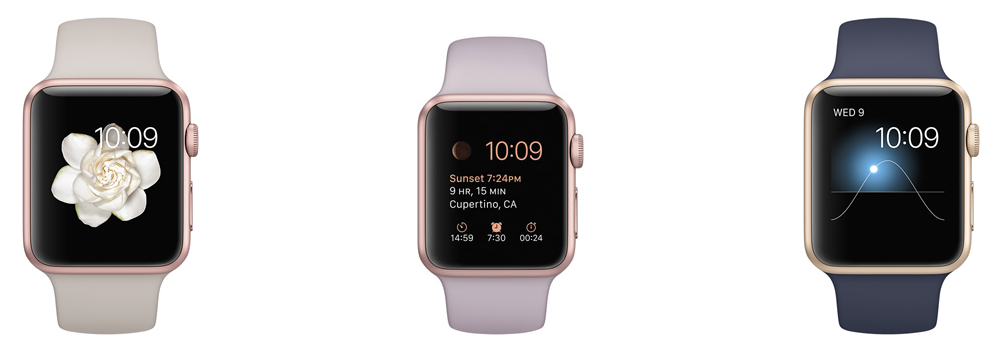
I’ve always been finnicky about watch straps, and I’ve got to say that the silicon one for the Sport model is one of the most comfortable I’ve ever worn. I find that with most watches I notice that I’m wearing it for a few days before I get comfortable with the strap. The Apple strap faded into being unnoticeable almost immediately. The fact that it’s silicon and not rubber or plastic is great for those who sweat a lot, as it’s easy to clean and never discolours.
Of course, Apple had to reinvent the way you put on a watch (the strap with the holes goes over and then under, not the other way around), but putting it on quickly becomes second nature, and the Watch is super secure on your wrist without the strap suffering from wear and tear. After eight months of testing, the first strap I got is still in great shape, although it does warp and mold to your wrist specifically over time (which, I suppose, is a nice quality).
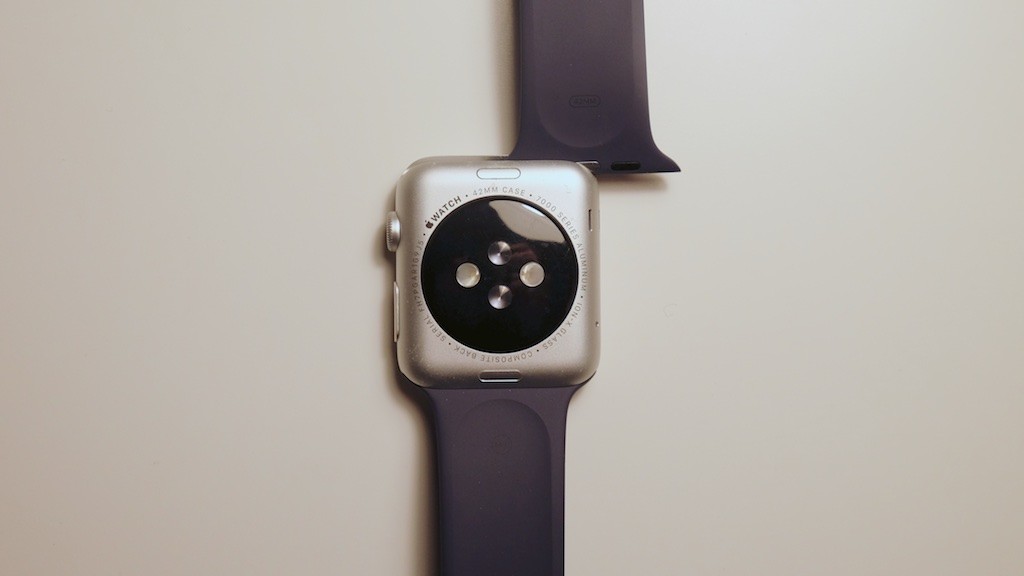 What’s more, Apple also concocted a really simple way to take off and replace straps without needing a tool. This opens up the opportunity for Watch owners to have any number of different band styles and strap colours, stretching your investment much further. Sure, accessory straps are pricey ($69 for the silicon Sport strap all the way up to a whopping $599 for the stainless steel link bracelet), but they sure beat buying a second watch for dressier or casual occasions. If you’re the type of runner that likes to rock a Garmin with a suit, you may not have a problem with a bright silicon strap, but it is nice to have an understated leather loop for those non-running moments in your life.
What’s more, Apple also concocted a really simple way to take off and replace straps without needing a tool. This opens up the opportunity for Watch owners to have any number of different band styles and strap colours, stretching your investment much further. Sure, accessory straps are pricey ($69 for the silicon Sport strap all the way up to a whopping $599 for the stainless steel link bracelet), but they sure beat buying a second watch for dressier or casual occasions. If you’re the type of runner that likes to rock a Garmin with a suit, you may not have a problem with a bright silicon strap, but it is nice to have an understated leather loop for those non-running moments in your life.
Apple Watch wears like many of the current running watches on the market, but it offers much more overall functionality. The most comparable models in terms of features would be the Garmin Fenix 3, Suunto Ambit3 and the Timex One GPS+. Both are very bulky and not nearly as stylish as the Apple Watch. And although both do offer the promise of further app development, Garmin and Timex’s flagship models don’t have the mass market appeal that will push developers into evolving the product. And that’s exactly why the Apple Watch is such an intriguing product, especially for runners. The Apple Watch is closer to an iPhone than a watch in what it can do and what it is capable of evolving into, whereas most current running watches (even the most fully featured ones) are still closer to an old digital stopwatch.
The drawbacks: No GPS and battery life
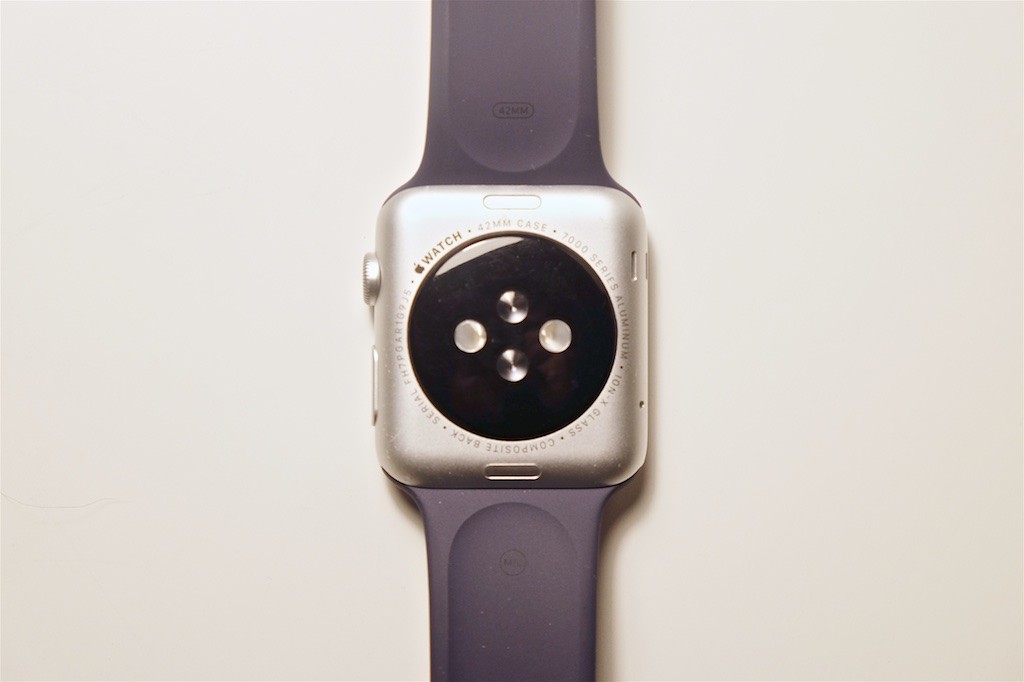
The one major drawback for runners looking to use the Apple Watch primarily as a running companion is the lack of GPS. In order to accurately track your run, you have to bring your phone along with you. That may not be an issue for some, but I don’t really like carrying my phone with me during a sweaty summer 10-miler. This is less of an issue when I’m run-commuting (as I carry my phone in a running pack anyhow) or during winter runs, as I typically toss my phone in my jacket pocket. And, as a recent Canadian Running poll revealed, nearly half of our readers run with their phone anyway, GPS accuracy shouldn’t be an issue all that often with the Apple Watch.
When running without your phone, Apple Watch relies on a sophisticated accelerometer to track movement. After about a week of running while connected to the phone, apparently the Watch has the ability to learn your movements competently enough that the accelerometer can do a decent job at tracking distance and pace on its own. After running with the Watch for several months, I must say that the Watch on its own, although not as accurate as GPS, is passable for an easy run. I’d say that, on average, after about an hour of running, it’s only about 5-10 per cent off the exact distance run, and on shorter runs of around 30-40 minutes, it has often been bang on with my Garmin 225. This might be a deal-breaker for the hardcores, but I found myself wearing it more often than not, only abandoning the Apple Watch on very specific workouts where I wanted to nail, say, a specific set of intervals.
Upon its initial release, the Watch suffered from a very disappointing battery life. It was tough to get through a full day without having to resort to a top-up charge, especially when I went for a 60 minute run mid-day and used a running app. But the WatchOS 2 update has massively improved battery life. I’ve thrown every type of day at this watch (including a three-workout, 42K doozy) and it’s been able to get through about 12 hours without dying on me. Ideally, the Watch’s efficiency will get to a place where the iPhone 6s is now – more than one day of fully-functional life. It’s not a deal-breaker that the Watch can’t get through two days without being charged, but it would be nice to be able to use its enormous sleep tracking potential. Thankfully, its power cable, which uses induction, is quick and quite a nifty step forward in device charging.
Is Apple committed to fitness?

It’s clear from the moment you start digging around in the Watches’ basic suite of apps that Apple is determined to make this device a big part of the user’s active life. There are three prominent apps native to the Watch that are really useful for anyone concerned about fitness: Activity, Workout and Heart Rate.
Activity is one of the show pieces of the Watch. Even after months of daily use, the Activity app is one of the reasons why I keep coming back to the Watch every morning when I decide what to wear. Previous to the Apple Watch, I’d never been motivated to track any detail of my day, apart from running. Sure, I’ve tested dozens of activity tracking devices, as well as many of the newer running watches that have now got on the activity tracker bandwagon and implemented it as a feature. But the data was never presented in a clear, engaging manner.
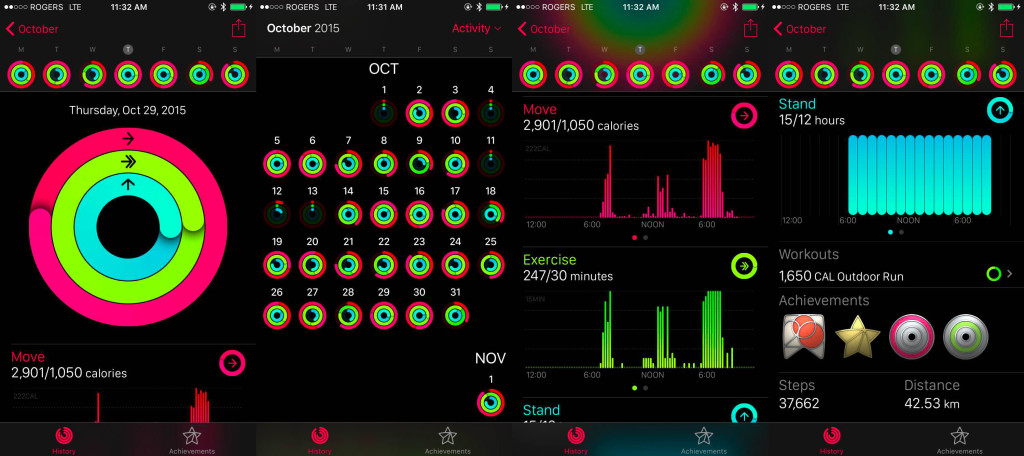
The Activity app uses three coloured rings indicating how many calories you’ve burned, how many minutes of exercise you’ve done and how many hours you’ve stood per day. With each you can also set daily goals, or just leave it on the default settings and the Watch will make adjustment suggestions after a week of use. Out of the box, the Watch is set to get you exercising in some capacity for about 30 minutes a day. Notifications also remind you to, say, get up and walk around every once and while. This is welcome for runners with day jobs that have them hunched over a computer all day. The simple, clever design of the Activity app challenges you to close all three rings each day. A successful week looks satisfying on the app’s calendar, with a series of completed red, blue and red rings.
WatchOS 2: What it means for runners
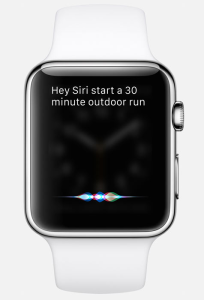
Now that Apple has fully opened up the Watch to third party developers with WatchOS 2, you can program all sorts of notifications, such as when to drink water and, foreseeably, health-oriented apps will be able to monitor your sleep, heart rate levels and other biometrics and then give you feed back on how to, say, get a better night’s sleep or lower your stress levels. Activity trackers have become trendy in the last couple of years because people want to live fitter lives. There’s be skepticism surrounding the efficacy of more basic products like the Fitbit. A robust device like the Apple Watch is operating on a much higher level and has the ability to pull and process data that could be used to facilitate very real change in how your train. I’ve written about this before, and a device like this is the first real step towards a level of access to data that wasn’t even really available to elites 10 years ago. And on a broader level a powerful yet well designed device like the Apple Watch has the capacity to significantly influence healthy choices at every turn.
Of course, one of the strengths of the Watch, the ability to monitor and program your life, can also lead to far too many alerts. Thankfully, pretty much every notification can be shut off, and I’d recommend that, upon getting the Apple Watch, spend some time just as you would with a new smartphone to customize the settings as you want the device to function. I actually ended up keeping most of the basic fitness-oriented notifications on, and really liked getting texts and Facebook messages on the Watch – which was something that I initially assumed would drive me nuts. It meant not being tempted to dig out my phone, especially while in the company of others or on an easy run. Of course, you can still block out the rest of the world during your run, but the ability to customize notifications means you won’t miss something that you would actually want to interrupt you.
We live in the future! Taking calls on the watch
The weirdest, most Dick Tracyesque aspect of the Watch is when you get a phone call. The Watch itself rings, giving you the option to either answer the call immediately or ignore it. If you take the call through the Watch it basically works as if you’re on speakerphone with your phone, only directly through your wrist. Taking a quick call on a run without having to fish your phone out of your pack is super handy, and perhaps more surprising than any other single feature of the Watch was the call quality. I wouldn’t recommend having a lengthy chat on it, but for a quick conversation, the Watch is remarkably clear and efficient.
Apple Watch as an iPod on your wrist
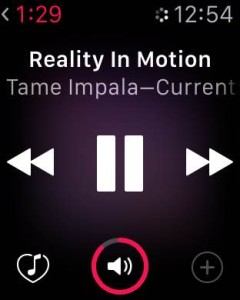 Another great feature for runners is how the Watch handles playlists. You can import a playlist of up to 1 GB and listen to it with Bluetooth headphones without having to carry along your iPhone. Basically, this turns the Watch into the most portable iPod ever. If you’ve never run with Bluetooth headphones, it’s a revelation, and the marriage of a player in a watch and a good set of headphones is worth the investment for those who like to soundtrack their workout.
Another great feature for runners is how the Watch handles playlists. You can import a playlist of up to 1 GB and listen to it with Bluetooth headphones without having to carry along your iPhone. Basically, this turns the Watch into the most portable iPod ever. If you’ve never run with Bluetooth headphones, it’s a revelation, and the marriage of a player in a watch and a good set of headphones is worth the investment for those who like to soundtrack their workout.
Other running watches, like TomTom’s new Spark GPS watch offer this feature as well, and it’s clearly something runners are demanding in the next generation of smart devices. There will come a time in the not so distant future when runners will expect (and demand) that one device do it all. The Apple Watch is pushing that idea, and its open OS and thousands of motivated developers means that we may see some surprising implementations of its hardware. That’s something that niche running watch brands just can’t leverage right now.
How the running apps work on Apple Watch
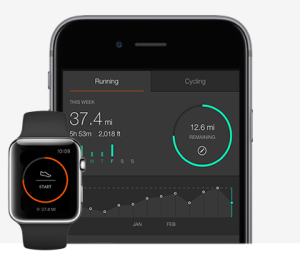
Four of the biggest run tracking platforms, Runtastic, Nike+, Runkeeper and Strava, launched with the device back in the spring. The second version of the Watch’s underlying operating software, the aptly named WatchOS 2, was introduced in the fall. It may not seem that sexy to prospective buyers, but WatchOS 2 is almost like a release of a new watch. It allows third party developers to tap in to the guts of the Watch and use the accelerometer, heart rate monitor, taptic engine, digital crown (which works as both a dial and a button), speaker and microphone in any way they can come up with to make an interesting app for the device. You may recall that when the first iPhone came out skeptics claimed that smartphones would have limited appeal. Eight years later, an entire industry was spawned out of phone app development. Today, we do just about everything on our phones. While the Apple Watch may not be the watershed device that the iPhone was, it certainly has the potential to evolve in exciting ways, particularly for those that use fitness devices on a daily basis.
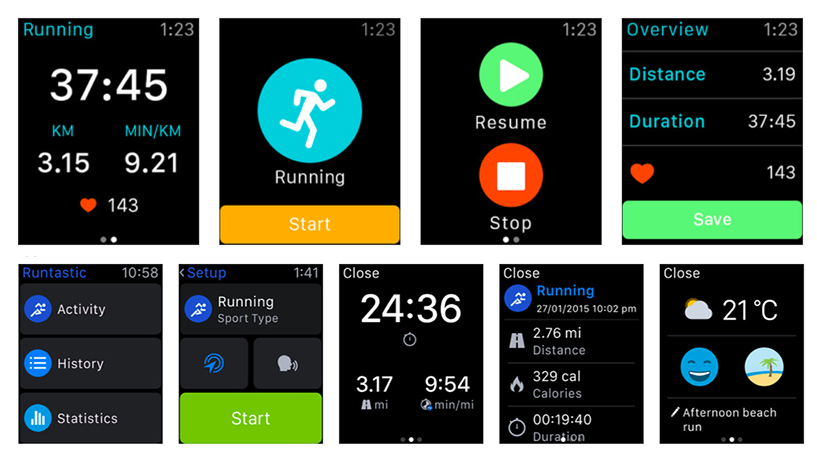
Two key apps, Runtastic and Runkeeper, have been very aggressive in making sure that their apps leveraged WatchOS 2. For now, Nike+, one of the biggest ecosystems in running, still relies on you carrying your phone with you during your run, which is annoying. Strava seems to have updated to WatchOS 2 with version 4.9, which taps into the heart rate monitor. Strava has been gaining in popularity with runners and it could become the best app for the Apple Watch if it uses the device to its full potential.
The perfect Apple Watch for runners would have GPS. Apple could probably add this feature without cannibalizing its iPhone sales. If Apple really wants to dominate the fitness and active lifestyle marketplace, all it has to do is roll out a second generation device with GPS. Garmin, TomTom, Polar and other leading sport watch brands would have a tough time competing with an Apple device that did it all.
So… should you buy the Apple Watch?
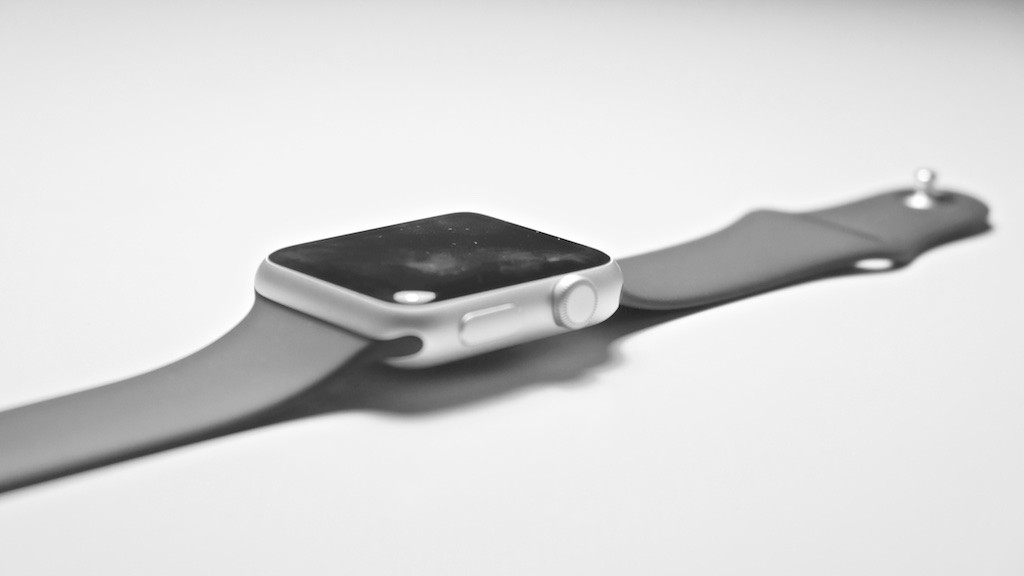 The big question facing this device has always been, “who’s it really for?” It seems that Apple is still trying to figure this out. Sales numbers have reportedly been good, but not great. The release of WatchOS 2 should prove to be the big shot in the arm that the device needs to get developers digging in and users more excited. What made the iPhone such a revolutionary device was in its potential, and the Watch still has plenty of untapped uses just waiting to be exploited, especially for those wishing to improve their health and get fit.
The big question facing this device has always been, “who’s it really for?” It seems that Apple is still trying to figure this out. Sales numbers have reportedly been good, but not great. The release of WatchOS 2 should prove to be the big shot in the arm that the device needs to get developers digging in and users more excited. What made the iPhone such a revolutionary device was in its potential, and the Watch still has plenty of untapped uses just waiting to be exploited, especially for those wishing to improve their health and get fit.
If you’re a diehard mileage counter and must have GPS for every running step you take, the Apple Watch isn’t ready for you… yet. But if you can let go of metre-by-metre tracking, the device has so many upsides for runners. It’s easily the best activity tracker on the market, and for runners that should be a big deal. We’re really good at nailing that daily run, but studies have shown that runners tend to fall into really bad habits when not running. Programming in a plethora of notifications and engaging with an ecosystem of health and lifestyle apps could seriously improve your quality of life, which certainly will have an effect on your running.
If you’re a new to running or have never owned a fully-featured GPS unit, the Apple Watch is actually a great fit. It’s at the same price point ($449-519) as a high end Garmin or Suunto and is arguably much more versatile as an everyday timepiece, as well as an activity tracker. It also makes for a great companion to your phone in social situations, meaning you don’t have to be that person that’s constantly staring down, checking messages during a conversation.
Watch connoisseurs will tell you at for around 500 bucks, this is a steal. The Apple Watch is beautifully designed, works exceptionally well and is evolving the concept of what a watch is for the wearer further than any other timepiece, well, ever. Just as we can no longer imagine a phone without the internet and apps, soon we will not be able to fathom a watch without activity tracking, heart rate monitoring, sleep monitoring, weather, navigation, and so on. If you’re curious about the fine grain details of your health and physical output, and love the idea of seeing how an increasing ecosystem of apps can improve you as a runner, Apple Watch is certainly a device that will be worth the cost.
For now, Apple Watch isn’t the one fitness device to end all fitness devices. Because it doesn’t have GPS without an accompanying phone, it’s not a total solution for runners. But, realistically, neither is any other device. No brand has yet made the one true perfect running watch. What surprised me about the Apple Watch is how close it is, without even really trying. Imagine if Apple did. Until then, it’s one heck of a pretty watch, and the best fitness tracker on the market. And it ain’t a bad running watch either.
